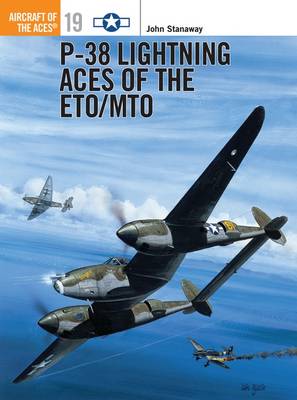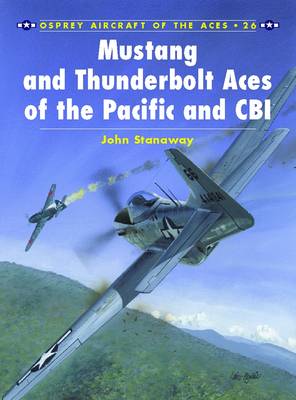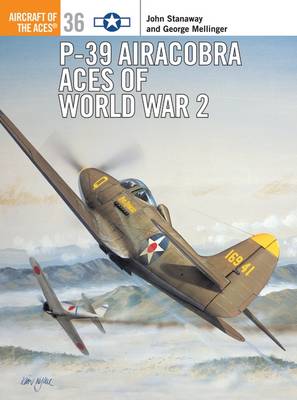Osprey Aircraft of the Aces S.
4 primary works
Book 14
The P-38 Lockheed Lightning was produced in response to the requirement for a long range, high speed and high altitude fighter to escort the USAAF's expanding B-17 bomber fleet. Powered by supercharged Allison engines, the type went into action both in Europe and the Pacific. This volume deals with the aces of the latter theatre of war who used the P-38 to accrue some of the highest scores achieved by any Allied fighter pilots in World War II. Pilots like Dick Bong (40 kills) and Tom McGuire (38 kills) led the kill listings for over 50 pilots who made aces whilst serving with the Fifth and Thirteenth Air Forces.
Book 19
Built by Lockheed to meet a USAAC requirement for a long-range, high-performance escort for the B-17 bomber, the P-38 Lightning made its combat debut in Europe in 1942. Its service in several combat theatres earned it the nickname "der gabelschwanzer teufal", or "the fork-tailed devil". Some 17 pilots scored seven or more kills in the P-38, with the top scorers, William J. Sloan and Michael Brezas, scoring 12 kills each. This volume presents archival photographs of Lightnings, scale drawings and interviews with several leading Lightning aces.
Book 26
Although far better known for their exploits over the war torn skies of Germany and Italy, the USAAF's premier fighters, the P-47 and P-51, also made significant contributions to the victory against Japan from 1943 onwards. This book relates the appearance of the Allison-engined A-36As and P-51As over Rangoon from India in November 1943, the 1st Air Commando Group in China, P-47s over the jungles of New Guinea in 1943, escorting B-29s on long-range bombing sorties against the Home Islands in 1944-45 and elsewhere.
Book 36
The first American fighter fitted with a tricyle undercarriage and mid-mounted engine, the P-39 proved less than successful in the hands of its launch customer, the US Army Air Force (AAF). Hampered by unreliabilty and poor engine performance at high altitude, the P-39 nevertheless served alongside the P-40 and P-38 in the bitter struggle to capture Guadalcanal in 1942/43, as well as seeing much action over the jungles of New Guinea. Around a dozen AAF aces scored five kills with the P-39, although this total was far outstripped by the Soviet Red Air Force, whose pilots rated the Airacobra as one of the best lend-lease fighters of the war.



